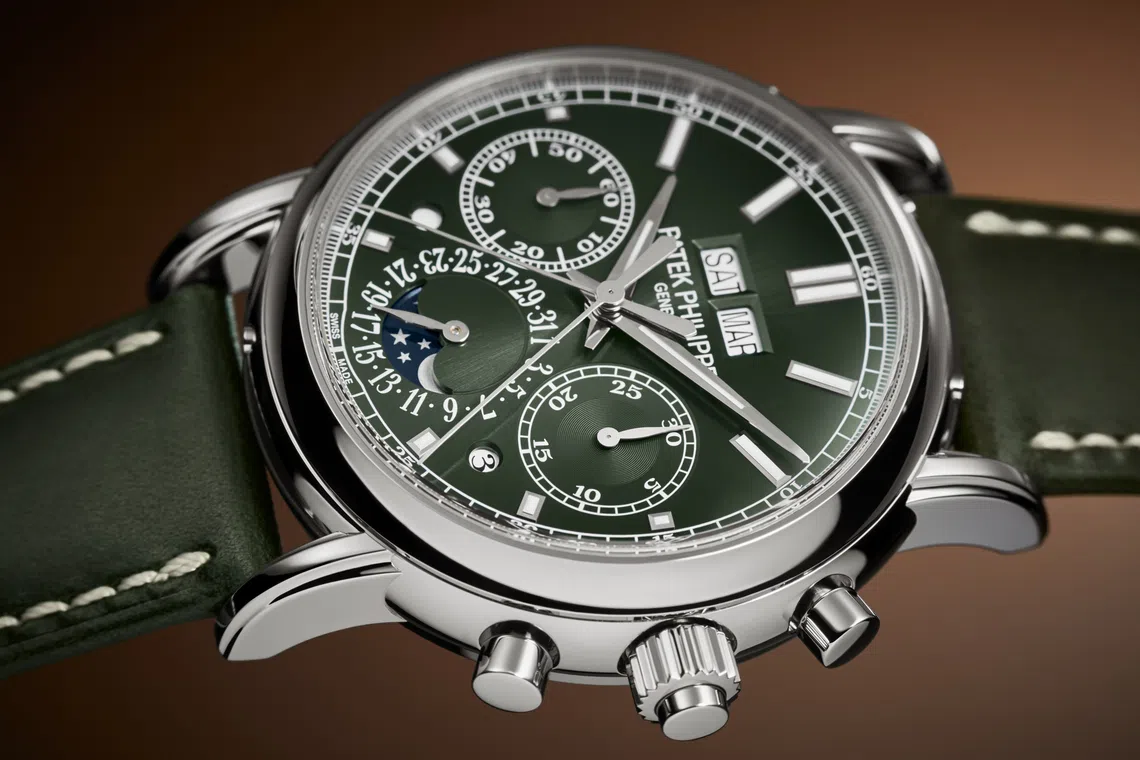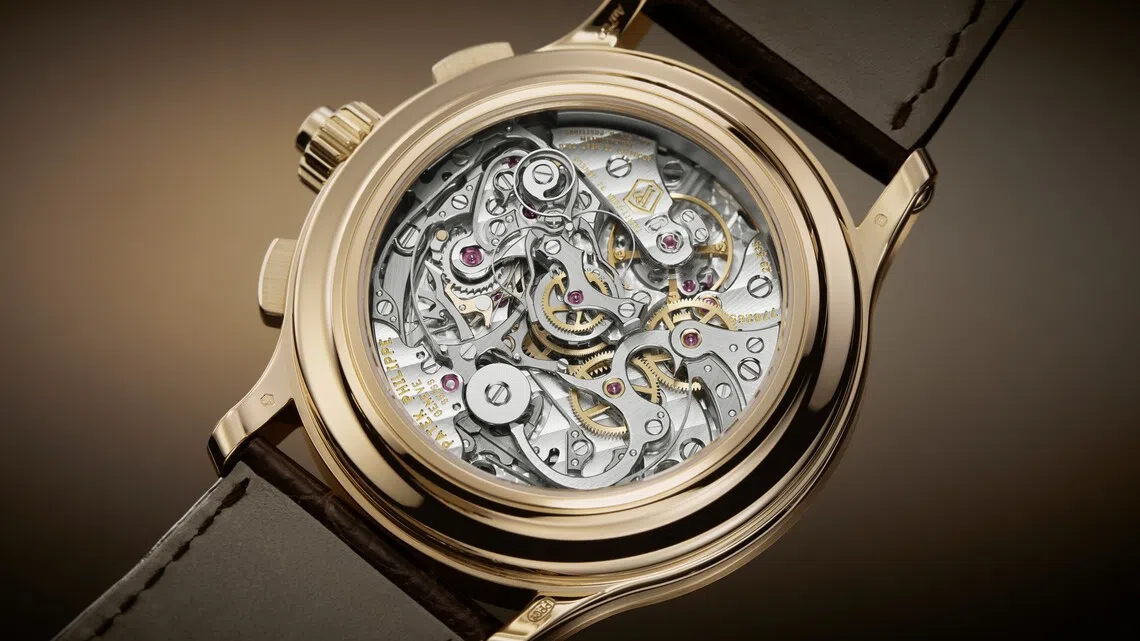Patek Philippe perfects the art of the split-seconds chronograph
The maison continues to refine one of horology’s most intricate and revered complications by blending technical mastery with timeless elegance
WHICH is the grandest horological complication: the minute repeater, the tourbillon, or the perpetual calendar?
Watch geeks will argue till the cows come home, but if there is one thing they will agree on, it is that the split-seconds chronograph – the rattrapante in French (literally, the act of recovering, recapturing) – is the most intricate among chronograph models.
The basic chronograph is, in essence, a stopwatch on the wrist. You use it to clock how fast a racer is, and if there are two racers, you use two chronograph timepieces.
But a single watch will do if it is a split-seconds chronograph. Fitted with two sweep, or chronograph, hands, this does the job of two typical chronograph watches, each with only one sweep second hand.
The first split-seconds chronograph was a pocket watch, which traces its history back to 1844. The wristwatch version appeared only in 1923. Patek Philippe produced it and called it the 1923 Officer Watch No 124824.
In 2014, the Patek Philippe Museum acquired one of these vintage chronographs for US$3 million (S$3.89 million).
A NEWSLETTER FOR YOU

Friday, 2 pm
Lifestyle
Our picks of the latest dining, travel and leisure options to treat yourself.

In the early years, the split-seconds chronograph was a versatile tool for races and scientific experiments. Patek Philippe’s Ref 1436, launched in 1936, represented the craft of making the complication at its peak. This model was mostly in yellow gold; only a handful are in pink gold.
The Ref 1436, which flaunts a movement (calibre 13130 CCR) with detailed finishing, is today a rare timepiece elevated to mythical status.
Patek Philippe has bestowed on the split-seconds chronograph the “Grand Complication” title. In 2005, it rolled out the Ref 5959, yet another split-seconds chronograph later to be accorded “most iconic” standing. The watch ticks on a hand-wound movement (CHR 27-525 PS) made in-house and, at 5.25 mm thick, is the thinnest of its kind ever made. Just 10 of the 5959 are produced yearly.
The Ref 5370P Patek Philippe, introduced in 2015, also has many fans. This split-seconds chronograph is a work of detailed attention to both movement performance and timeless design. Its “two-phase” chronograph movement (calibre CH 29-535 PS) guides the two pushers that deliver the three chronograph functions. The split-seconds pusher, which is integrated into the crown, is also instructed by the movement.
It is classical in construction, which means it is hand-wound with column wheel, and has a toothed-wheel horizontal clutch. Its advanced movement is packed with innovations, and it has seven patents, including one for the reworked split-seconds mechanism.
The 42 mm 5370P, encased in platinum, frames a black enamel dial circled by a tachymeter scale on the fringe. A blue enamel dial accompanied a second platinum model, which appeared in 2020. A year later, it was joined by a rose-gold version with matching grey dial and strap.

This year, a rose-gold model replaces the 5370P. The new 5370R is a showcase of craftsmanship. Its dial, with two subdials looking like panda eyes on a brown face, is decorated in two tones of brown Grand Feu enamel, hand-crafted on an 18K gold plate. The brown palette is carried over to a shiny alligator strap, secured by a new patented triple-blade foldover strap.
The split-seconds chronograph was paired with another grand complication, the perpetual calendar, in 1950, when Patek Philippe unveiled the Ref 2499. But the first serially produced wristwatch that combines the two came only in 1994, when the Ref 5004 was rolled out. This model was succeeded by the Ref 5204 in 2012.
The first 5204 was housed in a 40 mm platinum case with a hand-wound movement (CHR 29-535 PS Q), the same as the one in the 5370. The rose-gold variant arrived only in 2021, with a slate-grey dial and strap. A year after, a hand-polished white gold version was added.
In its latest guise, the 5204G sports an olive-green sun-burst dial with a black gradation, colours that are contemporary and timeless. This is matched with a shiny olive-green calfskin strap, which has a white gold foldover clasp.
Copyright SPH Media. All rights reserved.

